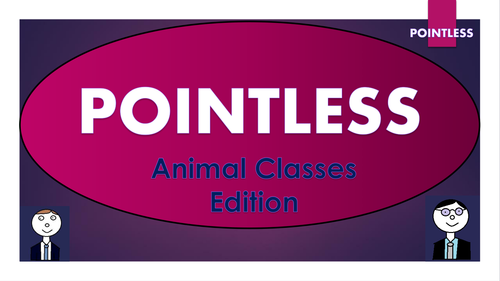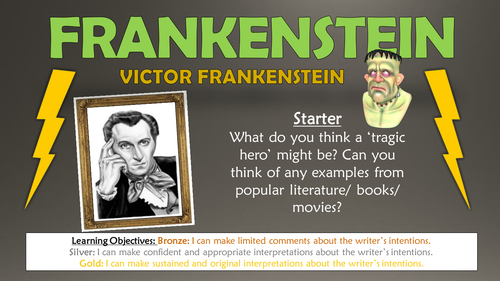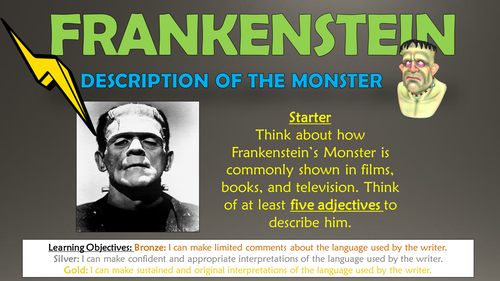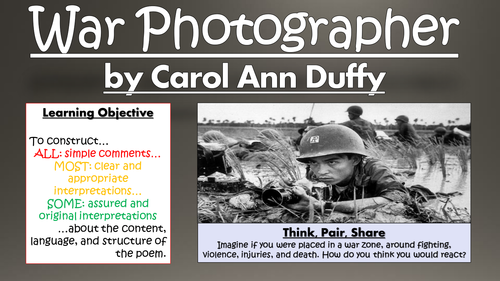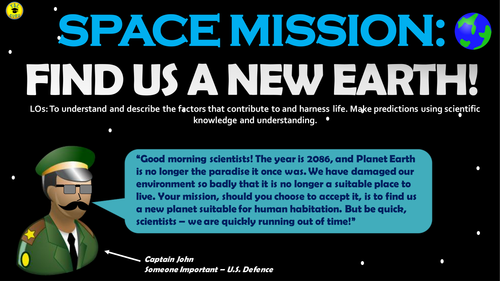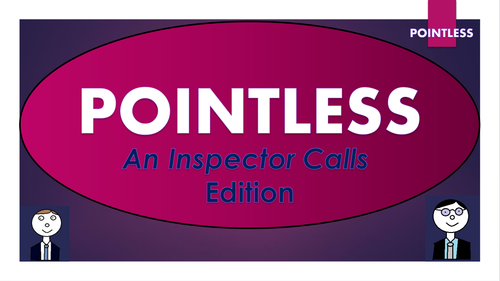
3k+Uploads
1950k+Views
2268k+Downloads
New teachers
Bundle Sale

Popular Fiction KS2 Comprehension Activity Booklets Big Bundle!
This bundle contains 7 fantastic comprehension activity booklets - each is over 20 pages in length, and focuses upon a different popular classic text.
The resource booklets contain a wide range of age-appropriate, engaging, and meaningful activities - perfect for use throughout class reading of texts or equally in guided reading sessions. They are perfect for aiding the progress of children towards meeting the KS2 comprehension expectations within the National Curriculum framework. Children love learning from these resources, whilst they are also of great use to teachers, as there is explicit information within each task regarding which comprehension strands the task is designed to demonstrate.
There are booklets included for the following texts:
- The Hobbit - J.R.R Tolkien
- A Series of Unfortunate Events -The Bad Beginning - Lemony Snicket
- Billionaire Boy - David Walliams
- Charlotte’s Web - E.B White
- Holes - Louis Sachar
- Skellig - David Almond
- The Lion, The Witch, and The Wardrobe - C.S Lewis
There are a huge range of activities! A PDF of each booklet is also provided, to prevent formatting issues.

A Series of Unfortunate Events - The Bad Beginning - KS2 Comprehension Activities Booklet!
This resource booklet contains a wide range of age-appropriate, engaging, and meaningful comprehension activities for use throughout the reading of Lemony Snicket's 'A Series of Unfortunate Events - The Bad Beginning.' Teachers have found them particularly useful in comprehension or guided reading sessions. They are perfect for aiding the progress of children towards meeting the upper KS2 expectations within the new National Curriculum framework. Children love learning from these resources, whilst they are also of great use to teachers, as there is explicit information within each task regarding which comprehension strands the task is designed to demonstrate. They also relate to key extracts, characters, and themes from the story, ensuring that children gain a deep understanding of the text.
Activities within the booklet include:
- 'An Interview with Violet' - to enable students to demonstrate that they can: 'Understand what is read by drawing on information from more than one paragraph, identifying key details that support the main ideas, and using quotations for illustration;'
- 'Snicket's Description' - to enable students to demonstrate that they can: 'Explain meanings of words that they know and ask the meaning of new words. Link the meaning of new words to words that they already know;'
- 'Count Olaf' - to enable students to demonstrate that they can: 'Understand what is read by drawing on information from more than one paragraph, identifying key details that support the main ideas, and using quotations for illustration;'
- 'Figurative Language in 'A Series of Unfortunate Events' - to enable students to demonstrate that they can: 'Discuss and evaluate how authors use language, including figurative language, to create an impact on the reader.'
Plus many, many more activities (the booklet is 21 pages in length!) I've also added it as a PDF in case the formatting differs on your computer.
All images are licensed for commercial use, and are cited on a separate document (included).
Bundle

Classifying Animals Lesson, Resources, and Pointless Game!
This bundle contains the 'Classifying Animals' lesson, and also the fun and interactive Animal Classes Pointless Game!
The detailed and engaging lesson enables students to gain an understanding of what animal classes are, and which animals belong to the different categories. Furthermore, they learn to categorise animals themselves, using scientific knowledge of the features of each animal class. Students justify their choices using critical thinking skills.
Students learn through a number of fun and interactive tasks, which enable them to:
- Define each animal class and understand its features;
- Exemplify each animal class, justifying their choices;
- Use research and investigative skills to categorise animals for whom the class is not immediately obvious;
- Evaluate the learning and understanding of themselves and their peers.
The resources include:
-Visually engaging and comprehensive whole-lesson presentation;
-Resources for the card-sorting activity;
-A categorising and justifying worksheet (and answer sheet for teacher);
-An investigation log;
-Step-by-step lesson plan.
To help their investigation write-ups, I've also thrown in the literacy writing mat for free!
All images are licensed for commercial use, and are cited on the final page of the slide.

Animal Classes - Pointless Game!
Based on the popular game show 'Pointless', this resource is perfect for use as a whole lesson resource, enrichment option, or revision tool. Editable, so that you can change to any other topic or change questions. (I've also added a blank template so that you can make your own games from scratch). Containing almost 30 slides of sound clips, engaging visuals, and suitably challenging questions, this resource is effective at both promoting engagement and enhancing learning.
There are several full rounds of questions to build or revisit knowledge of different animal classes and types - an important KS1 Science topic within the National Curriculum.
Round 1. Reptiles
Round 2. Animal Classes
Round 3. Anagrams Round
Round 4. Birds
The nature of this game ensures that the resource can challenge students of all levels.

Frankenstein: Victor Frankenstein - The Tragic Hero
This engaging and detailed lesson aims to improve students’ understanding of the lead protagonist in Mary Shelley’s Frankenstein: Victor Frankenstein. The lesson places a particular focus upon how Victor fits the role of a tragic hero, and it studies the actions and behaviours that lead to his inevitable demise. Students also analyse how Shelley uses the character of Victor to present key messages about religion, unchecked ambition, and the treatment of the ‘others’ in society.
The lesson follows a step-by-step learning journey, in which children learn through:
- Defining the role of the tragic hero and exploring how Victor personifies these features;
- Understanding prevailing attitudes towards religion, ambition, and appearances, and investigating how Victor would have been received considering these ideas;
- Reading and understanding extracts in which Victor's fatal flaws are evident, and considering how they are relevant;
- Analysing how Shelley utilises Victor and his demise to present key messages to readers;
- Linking knowledge of time, place, and author, and relating these to specific areas of the text;
- Peer assessing each other's learning attempts.
Included is:
- Whole lesson PowerPoint - colourful and substantial; (including an animated Frankenstein's monster to guide them through the lesson);
- Mood map - to track Victor's role in the plot and eventual destruction;
- 'Frankenstein's Actions' worksheet;
- Analysis template with success criteria for creating well-structured responses;
- Comprehensive lesson plan.
There are also opportunities for group learning, peer assessment, and whole class discussion. This was originally taught to middle-ability year 10 groups, but can easily be differentiated for groups of different ages and abilities.

Frankenstein: The Portrayal of Women!
This engaging and informative lesson aims to improve students’ understanding of the portrayal of women in Mary Shelley’s Frankenstein. The lesson places a particular focus upon the perceived role and characteristics of women in the late 1700s, and compares this to the manner in which they are presented in the text. By the end of the lesson, students demonstrate an ability to argue whether they think Shelley’s portrayal of women challenges or recycles existing ideas of women living at the time.
The lesson follows a step-by-step learning journey, in which children learn through:
- Understanding the social and historical context of life for women in the late 1700s;'
- Making links between contextual understanding and what is noted from the text;
- Reading and understanding key extracts from chapters 8, 22, and 23 - extracts that provide exposure to the female characters in the text;
- Inferring, and interpreting the key events of the extracts, and considering the impression that is given of women by Shelley;
- Arguing whether they feel that Shelley recycles or challenges the role of women at the time, using a purpose-made essay template;
- Peer assessing each other's learning attempts.
Included is:
- Whole lesson PowerPoint - colourful and substantial; (including an animated Frankenstein's monster to guide them through the lesson);
- Inferring and interpreting worksheet (and a teacher answer sheet);
- Extracts from Chapters 8, 22, and 23;
- The role of women worksheet;
- Analysis template with success criteria for creating well-structured responses;
- Comprehensive lesson plan.
There are also opportunities for group learning, peer assessment, and whole class discussion. This was originally taught to middle-ability year 9/10 groups, but can easily be differentiated for groups of different ages and abilities.
All images are licensed for commercial use, and image rights are listed on the last page of the presentation.
Bundle Sale

Frankenstein Lesson Bundle! (All Lessons, Resources, Plans, Everything!)
This engaging, varied, and informative scheme of learning is designed to help students gain a valuable understanding of Mary Shelley's horror classic 'Frankenstein.' The lessons enable students to gain a comprehensive understanding of the key features of plot, character, context, and language, in addition to considering the key themes and ideas running throughout the text.
All of the resources that you need are included in the bundle: informative and engaging whole lesson PowerPoints, worksheets, activities, and lesson plans.
The bundle is made up of a wide-range of interesting and exciting lessons, including:
- The Context of Frankenstein;
- Victor Frankenstein - The Tragic Hero;
- Shifting Narrative Viewpoints:
- Shelley's Description of the Monster;
- The Monster's Murders - Justified?
Stimulating, visual, and easily adaptable, these lessons provide suggested learning objectives and outcomes for students of a wide-range of abilities - The vast majority of tasks are differentiated to allow for different abilities and needs in your classroom. Each lesson loosely follows this logical learning journey to ensure that students learn in bite-size steps:
- Engaging
- Defining/ Understanding
- Identifying/Remembering
- Analysing/ Creating
- Peer or self evaluating.
All of the lessons are interactive, employ a variety of different teaching and learning methods and styles, and are visually-engaging.

Frankenstein: The Monster's Murders: Justified?
This lesson aims to improve students’ understanding of plot and characterisation in Mary Shelley’s gothic horror novel 'Frankenstein,' through critical engagement with the monster’s justification for murder. The lesson places a particular focus upon the hardship and suffering experienced by the monster, in addition to the discrimination and loneliness that he experiences. The lesson concludes with students completing a highly-informed argumentative piece, detailing whether they feel the monster was justified or not.
The lesson follows a step-by-step learning journey, in which children learn through:
- Recalling and understanding who, when, and why the monster kills individuals throughout the text;
- Reading and understanding key extracts from the text, which include third-person narration from the monster discussing his actions;
- Comprehending the key elements of plot development and character, through interpreting and inferring the key meanings in extracts;
- Listing opposite sides of an argument in regarding the monster's justification, in order to build a stronger case;
- Using the features of writing to argue in order to contend whether the monster was justified in his actions or not;
- Peer assessing each other's learning attempts.
Included is:
- Whole lesson PowerPoint - colourful and substantial; (including an animated Frankenstein's monster to guide them through the lesson);
- Comprehension worksheet (and a teacher answer sheet);
- Extracts from Chapters 16 and 24;
- Card-sorting resources for the introduction task;
- Writing to Argue Help-sheet;
- Analysis template with success criteria for creating well-structured responses;
- Comprehensive lesson plan.
There are also opportunities for group learning, peer assessment, and whole class discussion. This was originally taught to middle-ability year 9/10 groups, but can easily be differentiated for groups of different ages and abilities.
All images are licensed for commercial use, and image rights are listed on the last page of the presentation.

Frankenstein: Shelley's Description of the Monster!
This lesson aims to improve students’ understanding of the descriptive language used to depict the monster in Chapter 5 of Mary Shelley’s horror novel 'Frankenstein.' The lesson places a particular focus upon the descriptive language devices employed by Shelley, in order to create a clear image of the monster’s appearance in the reader's mind, and also to describe Victor’s strong reaction to his creation. By the end of the lesson, students demonstrate an ability to make sustained and original interpretations of the language used by the author.
The lesson follows a step-by-step learning journey, in which children learn through:
- Considering how their preconceptions about the monster have been influenced by modern media and representations;
- Read and understand a key extract from the beginning of chapter 5 - the point at which the monster comes to life;
- Infer and interpret the key developments of the extract, including Frankenstein's changing feelings and the monster's ambiguous actions;
- Identifying and analysing some of the key descriptive devices used by Shelley to create an image of the monster;
- Analysing the effect of the descriptive devices upon the reader;
- Peer assessing each other's learning attempts.
Included is:
- Whole lesson PowerPoint - colourful and substantial; (including an animated Frankenstein's monster to guide them through the lesson);
- Descriptive devices worksheet (and a teacher answer sheet);
- Extract from the beginning of Chapter 5;
- Inferring and Interpreting worksheet;
- Analysis template with success criteria for creating well-structured responses;
- Comprehensive lesson plan.
There are also opportunities for group learning, peer assessment, and whole class discussion. This was originally taught to middle-ability year 9/10 groups, but can easily be differentiated for groups of different ages and abilities.
All images are licensed for commercial use, and image rights are listed on the last page of the presentation.
Bundle Sale

Edexcel Conflict Poetry Lesson Bundle!
This engaging, varied, and informative scheme of learning is designed to help students gain a valuable understanding of the content, language, and structure features of a number of conflict poems, each of which are studied as a part of Edexcel’s new English Literature syllabus.
Made up of a wide-range of interesting and exciting lessons, students should complete this scheme having gathered vital skills in: interpreting the significant meanings poems, understanding the writer’s ideas within poems, understanding the social and historical contexts of the different wars/conflicts, and analysing features of content, language, and structure. Included are lessons on:
- The Charge of the Light Brigade - Alfred, Lord Tennyson
- Poppies - Jane Weir
- War Photographer - Carol Ann Duffy
- What Were They Like? - Denise Levertov
- PLUS A lesson on how to compare poems!
Stimulating, visual, and easily adaptable, these lessons provide suggested learning objectives and outcomes for students of a wide-range of abilities - The vast majority of tasks are differentiated to allow for different abilities and needs in your classroom. Each lesson loosely follows this logical learning journey to ensure that students learn in bite-size steps:
- Engaging
- Defining/ Understanding
- Identifying/Remembering
- Analysing/ Creating
- Peer or self evaluating.
All of the lessons are interactive, employ a variety of different teaching and learning methods and styles, and are visually-engaging. Resources, worksheets, and lesson plans are all provided.

War Photographer - Carol Ann Duffy
This engaging, comprehensive lesson aims to improve students’ understanding of Carol Ann Duffy’s contemporary war poem ‘War Photographer’ with particular focus upon the language and structure used within the poem to depict the photographer’s experiences. By the end of the lesson, students demonstrate their knowledge of the text analytically, through assured, appropriate, and sustained interpretations.
The lesson follows a step-by-step learning journey, in which children learn through:
- Defining the role of the war photographer, and understanding difficulties in their job;
- Securing contextual understanding of Carol Ann Duffy - the poet;
- Reading and interpreting the poem, using a provided line-by-line analysis, and interactive group activities;
- Developing their understanding through inferring and analysing key language and structural choices;
- Understanding how the war photographer's life varies between war-torn locations and 'Rural England;'
- Analysing how language and structure are used to portray the photographer' experiences;
- Peer assessing each other's learning attempts.
Included is:
- Whole lesson PowerPoint - colourful and substantial; (including hyperlinks to informative and engaging videos)
- Copy of poem;
- Deeper thinking worksheet (including a scaffolded version, and a teacher answer sheet);
- Analysis template with success criteria for creating well-structured responses;
- Comprehensive lesson plan.
There are also opportunities for group learning, peer assessment, and whole class discussion. This was originally taught to middle-ability year 9/10 groups, but can easily be differentiated for groups of different ages and abilities.
All images are licensed for commercial use, and image rights are listed on the last page of the presentation.

Ozymandias - Percy Bysshe Shelley
This engaging, comprehensive lesson provides an interesting and highly-informative study of Percy Bysshe Shelley's power and conflict poem: 'Ozymandias.' Throughout the lesson, students gain a detailed understanding of the poem, with a particular focus upon the content, language, and structural features employed by Shelley. By the end of the lesson, students demonstrate their knowledge of the text analytically, through assured, appropriate, and sustained interpretations.
The lesson follows a step-by-step learning journey, in which children learn through:
- Defining the key concept of power, and considering its role and implications in man's actions;
- Securing contextual understanding of both Ozymandias the ruler, and Percy Bysshe Shelley the poet;
- Reading and interpreting the poem, using a provided line-by-line analysis, and interactive group activities;
- Developing their understanding through inferring and analysing key language and structural choices;
- Analysing how the theme of power is explored through Shelley's content, language, and structure;
- Peer assessing each other's learning attempts.
Included is:
- Whole lesson PowerPoint - colourful and substantial; (including hyperlinks to informative and engaging videos)
- Copy of poem;
- Content, language and structure mind map;
- Deeper thinking worksheet;
- Analysis template with success criteria for creating well-structured responses;
- Comprehensive lesson plan.
There are also opportunities for group learning, peer assessment, and whole class discussion. This was originally taught to middle-ability year 9/10 groups, but can easily be differentiated for groups of different ages and abilities.
All images are licensed for commercial use, and image rights are listed on the last page of the presentation.

Space Mission: Find us a New Earth!
The year is 2086, and the students are needed for a special mission!
This space mission has been designed to provide students with a fun and interesting group challenge, whilst also building key skills in critical thinking and collaboration, and essential knowledge for Science, English, and Mathematics.
Students are placed in a scenario in which Earth is no longer habitable, and humans must seek to move to another planet in the Universe. Compiled for them is information on each of the potentially most habitable planets that are known to man (these are the real planets that have been confirmed by NASA and other agencies as having the most potential for life). In reading the key information, students will be drawing upon their knowledge of Science terminology, and will need to make some Maths calculations to work out implications of living on different planets.
What will become clear fairly quickly is that none of the potential planets are perfect, and they must use reasoned judgements to determine which of them have cons that could perhaps be overcome. They then present their ideas, using clear and articulate speaking and listening skills, and write up their report, using appropriate written communication (a scaffold is provided to frame this).
Everything is provided for you to download, print, and teach:
- A comprehensive, whole-activity PowerPoint that guides the students through the mission;
- Detailed and colourful information sheets on each of the contender planets for being the next Earth (these include links to amazing websites that can provide the children with more information);
- A 'Pros and Cons' scaffold, to help students record their findings;
- An information sheet on the 'habitable zone' around stars;
- A scaffold for writing up findings;
- Sorting cards for help with determining the key features of habitable planets;
- Full teacher guidance.
Considering the time and effort that it took to create these resources, I think that they offer exceptional value. Whenever I have used this activity before, it has taken at least 2-3 lessons, including the introduction, starter challenge, main mission, presentations, and write-up. I originally have used this with mid-ability Year 6,7, and 8 groups, but colleagues have easily adapted it for students across key stages 2-4.
All images have been cited at the end of the PowerPoint presentation and are licensed for commercial use.
Bundle Sale

Writing for Different Forms Huge Bundle!
These engaging, varied, and informative lessons are designed to help students build their skills at writing for a number of different forms, through utilising a range of sophisticated and original language ideas, tasks, and techniques.
Included in this bundle are lessons focusing on:
- Diary Writing;
- Recount Writing;
- Writing Autobiographies;
- Writing Newspaper Articles;
- Writing Reviews;
- Writing to Argue/Persuade;
- Travel Brochure Writing;
- Travel Writing: Constructing Imaginative Content;
- Travel Writing: Crafting Imaginative Language;
- Travel Writing: Creating Imaginative Structures;
Also included are helpsheets for students to use when writing for a wide range of purposes (e.g. inform, explain, etc.)
Stimulating, visual, and easily adaptable, these lessons provide suggested learning objectives and outcomes for students of a wide-range of abilities - The vast majority of tasks are differentiated to allow for different abilities and needs in your classroom. Each lesson loosely follows this logical learning journey to ensure that students learn in bite-size steps:
- Engaging
- Defining/ Understanding
- Identifying/Remembering
- Analysing/ Creating
- Peer or self evaluating.
All of the lessons are interactive, employ a variety of different teaching and learning methods and styles, and are visually-engaging. Resources, worksheets, and lesson plans are all provided - there is everything included that you need to teach!
Bundle Sale

Writing for Different Forms Big Bundle!
These engaging, varied, and informative lessons are designed to help students build their skills at writing for a number of different forms, through utilising a range of sophisticated and original language ideas, tasks, and techniques.
Included in this bundle are lessons focusing on:
- Diary Writing;
- Recount Writing;
- Writing Autobiographies;
- Writing Newspaper Articles;
- Writing Reviews.
Also included are helpsheets for students to use when writing for a wide range of purposes (e.g. inform, explain, etc.)
Stimulating, visual, and easily adaptable, these lessons provide suggested learning objectives and outcomes for students of a wide-range of abilities - The vast majority of tasks are differentiated to allow for different abilities and needs in your classroom. Each lesson loosely follows this logical learning journey to ensure that students learn in bite-size steps:
- Engaging
- Defining/ Understanding
- Identifying/Remembering
- Analysing/ Creating
- Peer or self evaluating.
All of the lessons are interactive, employ a variety of different teaching and learning methods and styles, and are visually-engaging. Resources, worksheets, and lesson plans are all provided - there is everything included that you need to teach!

Writing Newspaper Articles!
This interesting and engaging enables students to know what newspaper articles are and why people read them, understand the features that make effective newspaper articles, and write their own interesting and appropriate newspaper articles. In particular, students learn to use a range of appropriate features in writing their own newspaper articles, including facts and opinions, jargon, testimonies, and puns. There are easily enough resources here for 2 lessons on this topic.
Over the course of their learning journey, students:
- Define and exemplify what newspapers are;
- Understand why people read newspapers;
- Understand and categorise the different techniques used by newspapers;
- Identify the features of newspapers in model examples;
- Analyse the effect of techniques in newspapers upon the reader;
- Use a wide-range of techniques in writing their own newspaper articles;
- Peer and self assess each other's newspaper article attempts.
The resources include:
-Visually engaging whole-lesson PowerPoint;
-A colourful and helpful 'Writing Newspaper Articles' Help-Sheet;
-Techniques cards for defining the key key features of newspaper articles;
-Analysing newspaper articles worksheet;
-Blank newspaper article template;
-A model example of a newspaper article;
-Helpful and comprehensive step-by-step lesson plan.
All images are licensed for commercial use, and are cited on the final page of the slide.
Bundle Sale

GCSE Poetry Huge Lesson Bundle!
This huge resource pack contains highly stimulating, detailed, and informative whole-lesson resources for 18 different poems - each of the poems feature on the new GCSE poetry lists for the vast majority of examining boards. In addition to this, the lesson on comparing poems is also included - essential for exam technique! The poems included are largely from the Relationships and War/Conflict poetry lists.
Individually, these resources are worth more than double the price of the bundle, meaning that you can make a considerable saving!
Each lesson employs a wide range of teaching and learning strategies, with a large variety of interesting tasks and ideas. This pack contains a whole-lesson PowerPoint presentation for each poem, in addition to all of the worksheets, task resources, and lesson plans that you need to teach.
Bayonet Charge - Ted Hughes
Before You Were Mine - Carol Ann Duffy
Dulce et Decorum est - Wilfred Owen
In Paris with You - James Fenton
Love's Philosophy - Percy Bysshe Shelley
Mametz Wood - Owen Sheers
Mother, Any Distance - Simon Armitage
Neutral Tones - Thomas Hardy
next to of course god america i - E.E. Cummings
Out of the Blue - Simon Armitage
Ozymandias - Percy Bysshe Shelley
Poppies - Jane Weir
Sonnet 116 - William Shakespeare
The Charge of the Light Brigade - Alfred, Lord Tennyson
The Falling Leaves - Margaret Postgate Cole
War Photographer - Carol Ann Duffy
What Were They Like? - Denise Levertov
When We Two Parted - Lord Byron
Comparing Poems!
All images are licensed for commercial use, and are cited on the final slide of the presentations.
Bundle

Recount, Diary, and Autobiographical Writing!
These engaging and detailed resources have been designed to make the learning of Recount, Diary, and Autobiography writing forms easily accessible, engaging and interesting for all children. Throughout each lesson, students learn to improve their skill at using appropriate, concise, and precise spelling, punctuation, and grammar, and practice employing them within their own writing compositions. Each lesson contains a comprehensive whole lesson PowerPoint, all the resources that you will need, and a lesson plan.
The pack also includes a literacy writing mat to help students build their extended writing skills.
All images are licensed for commercial use, and are cited on the final slide of the PowerPoint/ the bottom of worksheets.

An Inspector Calls Pointless Game (and blank template to make your own games!)
Based on the popular game show 'Pointless', this resource is perfect for use as a whole lesson resource, enrichment option, or revision tool. Editable, so that you can change to any other topic or change questions. (I've also added a blank template so that you can make your own games from scratch). Containing almost 30 slides of sound clips, engaging visuals, and suitably challenging questions, this resource is effective at both promoting engagement and enhancing learning. There are several full rounds of questions to build or revisit knowledge of characters, plot, and themes in 'An Inspector Calls.'
Round 1. The characters in An Inspector Calls (takes approx 10 mins)
Round 2. Quotations from the text (takes approx 15 mins)
3. Settings, themes, and objects (takes approx 15 mins)
4. Themes in An Inspector Calls (takes approx 10 mins)
The nature of this game ensures that the resource can challenge students of all levels.
Bundle Sale

A View from the Bridge Lesson Bundle!
This engaging, varied, and informative scheme of learning is designed to help students gain understanding, assessment skills, and key interpretations of Arthur Miller’s play ‘A View from the Bridge.’ Made up of a wide-range of interesting and exciting lessons, students should complete this scheme having gathered vital skills in: interpreting the significant meanings of the text, understanding the writer’s ideas within the text, identifying the traits of key characters, settings, and themes, understanding dramatic and language devices, and relating the text to its social and historical context.
Stimulating, visual, and easily adaptable, these lessons provide suggested learning objectives and outcomes for students of a wide-range of abilities - The vast majority of tasks are differentiated to allow for different abilities and needs in your classroom. Each lesson loosely follows this logical learning journey to ensure that students learn in bite-size steps:
- Engaging
- Defining/ Understanding
- Identifying/Remembering
- Analysing/ Creating
- Peer or self evaluating.
All of the lessons are interactive, employ a variety of different teaching and learning methods and styles, and are visually-engaging. Resources, worksheets, and lesson plans are all provided.




